 Facebook
Facebook
 X
X
 Instagram
Instagram
 TikTok
TikTok
 Youtube
Youtube

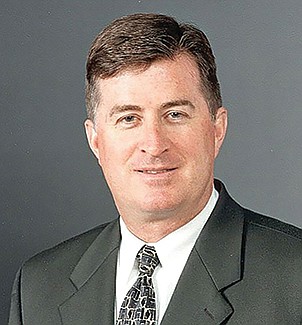
"The weakest recovery in history will not become the longest in history.” Thus speaks Kelly Cunningham, economist for the National University System Institute for Policy Research.
From late 2007 to early 2009, the United States and San Diego went through the worst economic downturn since the Great Depression. Then came the most anemic recovery ever. Cunningham is not predicting that 2016 will be a disastrous year for the San Diego economy, but he thinks it will be a little weaker than 2015.
He is warning San Diegans not to expect the local economy to bounce back vigorously. “There is no reason to believe that in the seventh year of this weak recovery, things will accelerate,” says Cunningham. For example, San Diego County added 40,000 jobs in 2015, “the best performance since 1999.” Next year, the figure may be 34,000 jobs, “and a lot will be low-paying jobs.”
For many years, the military accounted for more than 20 percent of the San Diego economy. That included uniformed personnel, civilians working on bases, retirement pay, base construction and maintenance, and aerospace-defense manufacturing. Beginning in 2011, that came down and is now less than 20 percent. San Diego is a leading drone maker, but it has more work to do in transferring output to cybersecurity and the war on terrorism.
Similarly, real estate for years was 22 percent of the economy. That included sales, renting, leasing, and construction. “It’s now less than 22 percent but hasn’t dropped below 20 percent,” says Cunningham.
Robert Campbell, producer of the Campbell Real Estate Timing Letter, thinks that, for the next several months, or possibly a good deal longer, the housing boom will continue. That’s what his statistical indicators are telling him. Residential real estate was in a huge bubble before the 2008 crash. Then, when the Federal Reserve frenetically printed money in early 2009, interest rates plunged, and housing made a big rebound.
But this strong housing market has been a result of hyper-rapid money and credit creation by the Federal Reserve. “By holding short-term interest rates near 0.0 percent for six straight years, the [Federal Reserve] has been pushing savers into real estate and the stock market,” says Campbell. This rapid money printing “boosts asset prices — and not the economy.” Buckle your seatbelt: “We may be in the early stages of a global stock market and asset market crash.”
Most analysts have a moderate view similar to Cunningham’s, or even one that is more optimistic, but there are some very intelligent economists and analysts who share Campbell’s fears of another bubble exploding.
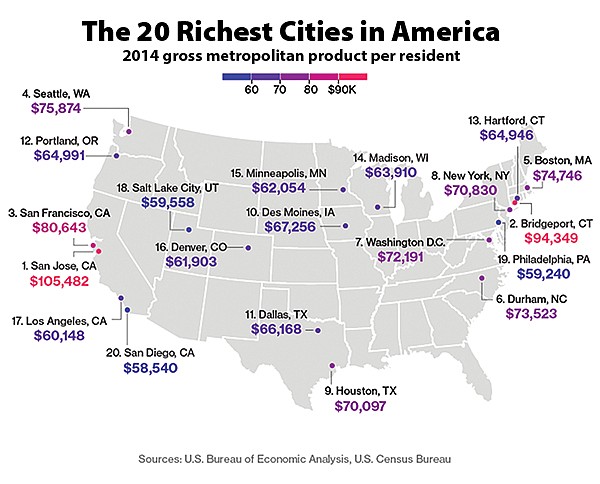
And there is still another scary view: the stark chasm between the superrich and the rest of us spells economic danger. Joel Kotkin of Chapman University fears California is becoming a “feudal society” of rich and poor. Los Angeles, Oakland, Sacramento, Long Beach, and Riverside have very high poverty levels, according to a study by the National Resource Network. And, of course, San Bernardino, Stockton, and Vallejo have been forced into bankruptcy.
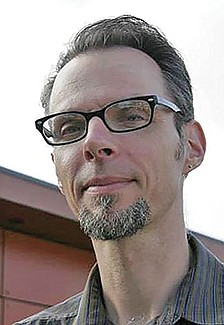
San Diego has similar problems, says Peter Brownell, research director of the Center on Policy Initiatives. The San Diego metro area poverty rate in 2014 was 14.7 percent, an improvement over the Los Angeles area’s 17.3 percent. Next year, San Diego should show “some slow improvement in poverty,” hopes Brownell. California’s minimum wage rises to $10 per hour in January. In June, San Diegans go to the ballot on an initiative that would raise the minimum to $11.50 in 2017, with later increases indexed to inflation beginning in 2019.
“Two-thirds of the county workforce works in [the city of] San Diego,” says Brownell. “That should make a positive difference. What is being proposed is more moderate than in other places; my impression is that people understand how high the cost of living is, and a pretty strong majority is willing to support a moderate increase in the living wage.”
A higher minimum wage should lessen the income and wealth inequality that has harmed San Diego, says Brownell. His forecast for the 2016 economy: “I don’t see much change from 2015, but I am hopeful for an increase in the minimum wage.”
Cunningham points out some problems: “Between 2011 and 2014 only 26,000 homes were built in San Diego, but we added 122,000 jobs. So, five times as many jobs have been added as homes built. It’s usually a 2 to 1 ratio. The housing market is becoming very tight; we are not building enough to accommodate the housing requirements.”
Retail sales have picked up, says Cunningham, but even including online sales, “We have still not recovered to where we were before the recession,” he says. One major reason: median household income, adjusted for inflation, is lower than it was in 2006 and 2007.
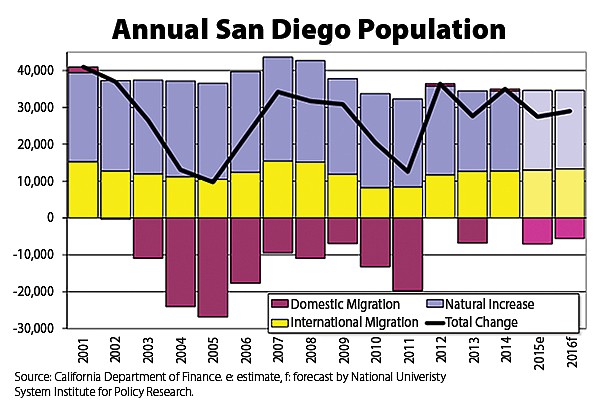
Population growth is “less than 1 percent a year,” says Cunningham, who can remember the boom years of the 1980s, when population would rise 3 percent in one year. “Domestic migration is still negative. More people are moving out [to domestic locations] than are moving in, although international migration is picking up.”
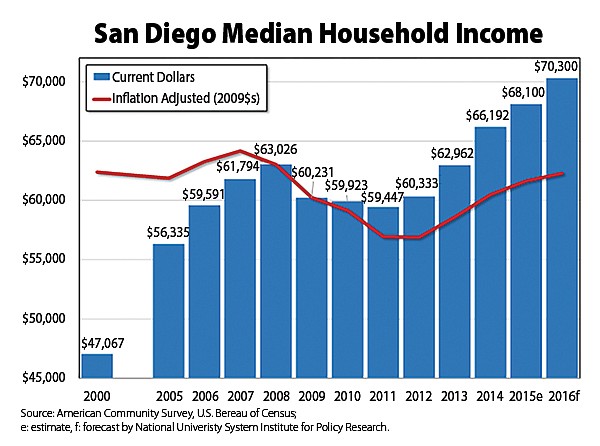
San Diego incomes are higher than those in most major U.S. metropolitan areas, but the cost of living is third highest among the nation’s major metro areas. Household income is 23 percent higher than the nation’s, but the cost of living is 42 percent higher. Housing affordability is one of the nation’s worst. That’s a reason that domestic migration outflow tops inflow: how many families can afford San Diego?
Salaries are highest in tech jobs, and tech should continue to be more than 15 percent of the total economy. However, the loss of Qualcomm jobs, a result of announced layoffs last summer, will be a problem. “I find it hard to believe that all of [the people laid off by Qualcomm] will find other tech jobs in San Diego,” says Cunningham.
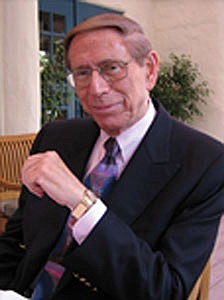
This year has been excellent for the hotel business, says Jerry Morrison of Morrison & Company. But, San Diego hotels “have definitely been trailing Los Angeles and San Francisco.” Morrison believes “we will eventually lose Comic-Con, as its needs expand.” He thinks San Diego needs a convention center with a contiguous expansion. All told, “It looks like a very strong 2016” for the hotel industry, he says.



"The weakest recovery in history will not become the longest in history.” Thus speaks Kelly Cunningham, economist for the National University System Institute for Policy Research.
From late 2007 to early 2009, the United States and San Diego went through the worst economic downturn since the Great Depression. Then came the most anemic recovery ever. Cunningham is not predicting that 2016 will be a disastrous year for the San Diego economy, but he thinks it will be a little weaker than 2015.
He is warning San Diegans not to expect the local economy to bounce back vigorously. “There is no reason to believe that in the seventh year of this weak recovery, things will accelerate,” says Cunningham. For example, San Diego County added 40,000 jobs in 2015, “the best performance since 1999.” Next year, the figure may be 34,000 jobs, “and a lot will be low-paying jobs.”
For many years, the military accounted for more than 20 percent of the San Diego economy. That included uniformed personnel, civilians working on bases, retirement pay, base construction and maintenance, and aerospace-defense manufacturing. Beginning in 2011, that came down and is now less than 20 percent. San Diego is a leading drone maker, but it has more work to do in transferring output to cybersecurity and the war on terrorism.
Similarly, real estate for years was 22 percent of the economy. That included sales, renting, leasing, and construction. “It’s now less than 22 percent but hasn’t dropped below 20 percent,” says Cunningham.
Robert Campbell, producer of the Campbell Real Estate Timing Letter, thinks that, for the next several months, or possibly a good deal longer, the housing boom will continue. That’s what his statistical indicators are telling him. Residential real estate was in a huge bubble before the 2008 crash. Then, when the Federal Reserve frenetically printed money in early 2009, interest rates plunged, and housing made a big rebound.
But this strong housing market has been a result of hyper-rapid money and credit creation by the Federal Reserve. “By holding short-term interest rates near 0.0 percent for six straight years, the [Federal Reserve] has been pushing savers into real estate and the stock market,” says Campbell. This rapid money printing “boosts asset prices — and not the economy.” Buckle your seatbelt: “We may be in the early stages of a global stock market and asset market crash.”
Most analysts have a moderate view similar to Cunningham’s, or even one that is more optimistic, but there are some very intelligent economists and analysts who share Campbell’s fears of another bubble exploding.

And there is still another scary view: the stark chasm between the superrich and the rest of us spells economic danger. Joel Kotkin of Chapman University fears California is becoming a “feudal society” of rich and poor. Los Angeles, Oakland, Sacramento, Long Beach, and Riverside have very high poverty levels, according to a study by the National Resource Network. And, of course, San Bernardino, Stockton, and Vallejo have been forced into bankruptcy.

San Diego has similar problems, says Peter Brownell, research director of the Center on Policy Initiatives. The San Diego metro area poverty rate in 2014 was 14.7 percent, an improvement over the Los Angeles area’s 17.3 percent. Next year, San Diego should show “some slow improvement in poverty,” hopes Brownell. California’s minimum wage rises to $10 per hour in January. In June, San Diegans go to the ballot on an initiative that would raise the minimum to $11.50 in 2017, with later increases indexed to inflation beginning in 2019.
“Two-thirds of the county workforce works in [the city of] San Diego,” says Brownell. “That should make a positive difference. What is being proposed is more moderate than in other places; my impression is that people understand how high the cost of living is, and a pretty strong majority is willing to support a moderate increase in the living wage.”
A higher minimum wage should lessen the income and wealth inequality that has harmed San Diego, says Brownell. His forecast for the 2016 economy: “I don’t see much change from 2015, but I am hopeful for an increase in the minimum wage.”
Cunningham points out some problems: “Between 2011 and 2014 only 26,000 homes were built in San Diego, but we added 122,000 jobs. So, five times as many jobs have been added as homes built. It’s usually a 2 to 1 ratio. The housing market is becoming very tight; we are not building enough to accommodate the housing requirements.”
Retail sales have picked up, says Cunningham, but even including online sales, “We have still not recovered to where we were before the recession,” he says. One major reason: median household income, adjusted for inflation, is lower than it was in 2006 and 2007.

Population growth is “less than 1 percent a year,” says Cunningham, who can remember the boom years of the 1980s, when population would rise 3 percent in one year. “Domestic migration is still negative. More people are moving out [to domestic locations] than are moving in, although international migration is picking up.”

San Diego incomes are higher than those in most major U.S. metropolitan areas, but the cost of living is third highest among the nation’s major metro areas. Household income is 23 percent higher than the nation’s, but the cost of living is 42 percent higher. Housing affordability is one of the nation’s worst. That’s a reason that domestic migration outflow tops inflow: how many families can afford San Diego?
Salaries are highest in tech jobs, and tech should continue to be more than 15 percent of the total economy. However, the loss of Qualcomm jobs, a result of announced layoffs last summer, will be a problem. “I find it hard to believe that all of [the people laid off by Qualcomm] will find other tech jobs in San Diego,” says Cunningham.

This year has been excellent for the hotel business, says Jerry Morrison of Morrison & Company. But, San Diego hotels “have definitely been trailing Los Angeles and San Francisco.” Morrison believes “we will eventually lose Comic-Con, as its needs expand.” He thinks San Diego needs a convention center with a contiguous expansion. All told, “It looks like a very strong 2016” for the hotel industry, he says.
Comments